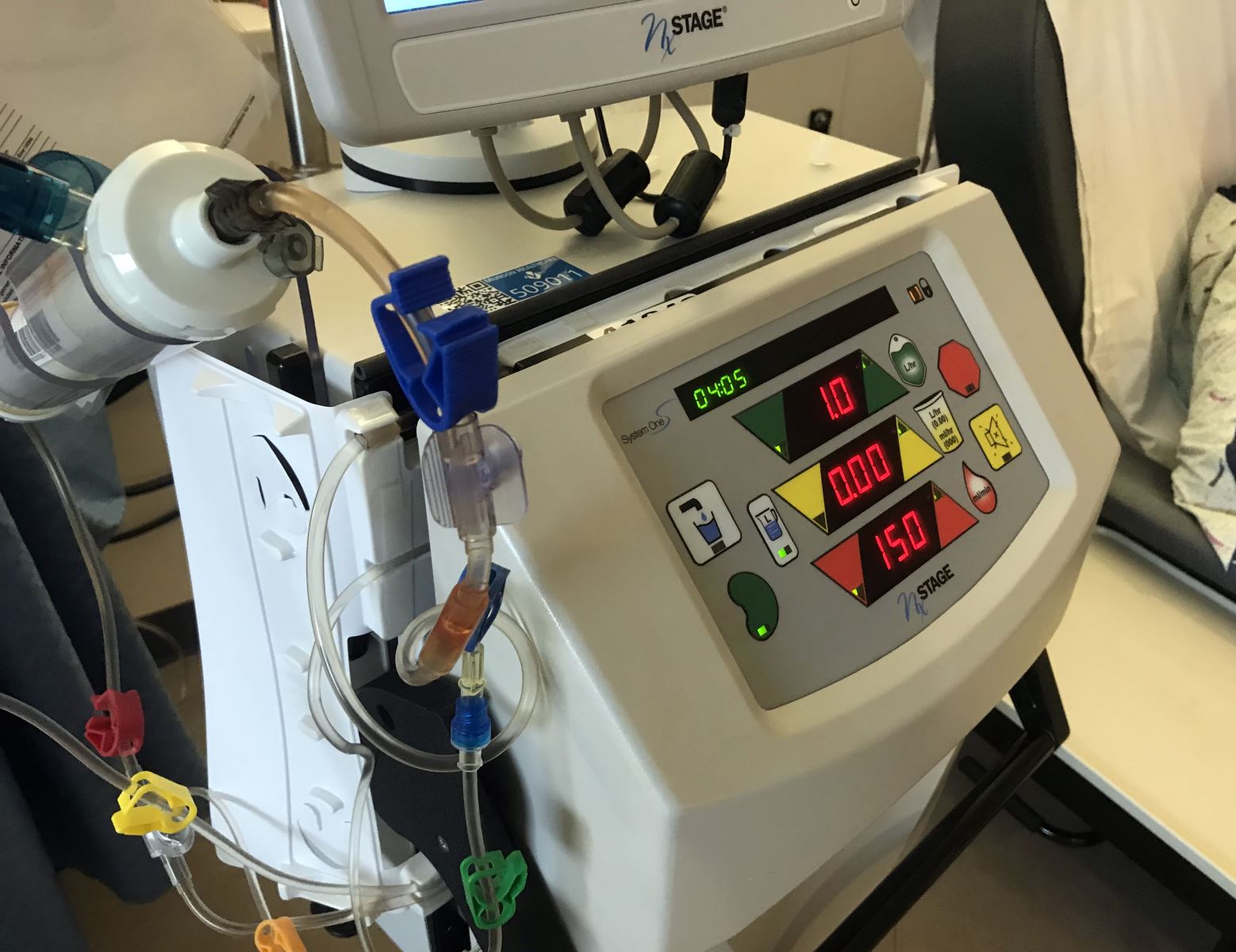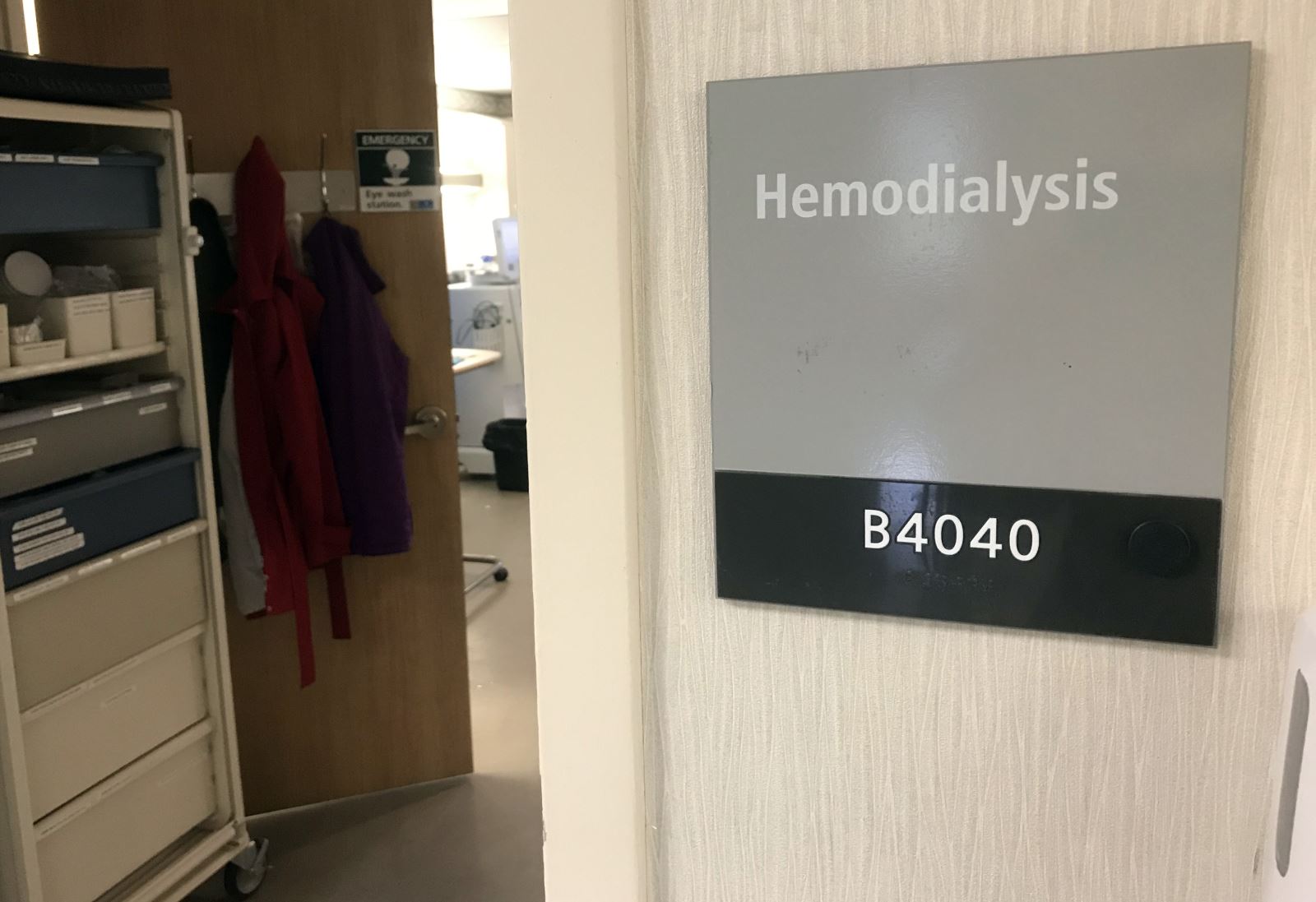
A new procedure offered at Munson Medical Center allowed Interlochen’s Trish Marek to leave the hospital after 22 days of care instead of being transferred to Grand Rapids.
She arrived in the hospital’s Emergency Department with pancreatitis and was diagnosed with high triglyceride levels.
Initial medical treatments over several days were not able to bring her levels down and options involved transferring to a downstate hospital until discussions turned to a new procedure the hospital began offering in September. Trish became the first patient at Munson Medical Center to undergo the procedure.
“Typically, high triglycerides are treated with medical therapy, which is highly effective - however, she developed another condition preventing us from using those medicines,” said John Stanifer, M.D, a nephrologist and medical director of Munson Medical Center’s plasmapheresis program. “We were left with few options, and she did not want to transfer down to Grand Rapids or U of M. So, we were able to offer plasmapheresis, and overnight we were able to lower her triglycerides by nearly 50 percent.”
 Understanding Plasmapheresis
Understanding Plasmapheresis
Plasmapheresis involves the use of inpatient dialysis machines with specific membranes designed to allow some molecules to pass through and others to be held back – allowing for separation of harmful molecules. Disease-causing abnormal proteins, antibodies, and in some cases, cells, are targeted and removed from the blood.
Dr. Stanifer, other nephrologists, and inpatient dialysis nurses worked together to implement the program as a means to bring specialized care closer to home. He characterizes plasmapheresis as an important service to improve the quality of life for many northern Michigan patients.
“In some cases, plasmapheresis is curative, in some disease states it becomes a bridge to other therapies such as chemotherapy, while in other disease areas it is a band-aid that allows us to tamp down the symptoms or the manifestations of that disease by using this therapy,” he said.
Treatments typically range from one-to-two hours for most patients, but depending on the disease, patients can require just a handful of treatments or several over a period of weeks. For some chronic conditions it is used periodically throughout their lifetime.
Multidisciplinary Collaboration
Munson Healthcare nephrologists will collaborate with neurologists, hematologists, oncologists, rheumatologists, and other specialties to develop specific treatment plans for patients who can benefit from the procedure.
“There have been outpatients driving to Grand Rapids for this and other inpatients who did not want to be transferred for this treatment who opted for second-best or third-best therapies,” Dr. Stanifer said. “Patients now are going to be closer to home and we are going to have better outcomes because of it.”
For Trish, the procedure targeted her triglycerides and bilirubins. Three treatments brought her levels to a place where she could be safely discharged from the hospital. She said staying in northern Michigan for care meant a lot.
“Just the comfort of knowing that my family didn’t have to uproot and leave their jobs to come be with me, that was huge,” she said. “Knowing that I am paving the way for others to be able to have this procedure done in northern Michigan warms my heart, understanding it will ease some frustration for other families as well. It really went well, it brought down my numbers significantly.”
Learn more about the specialty services Munson Healthcare offers at munsonhealthcare.org.